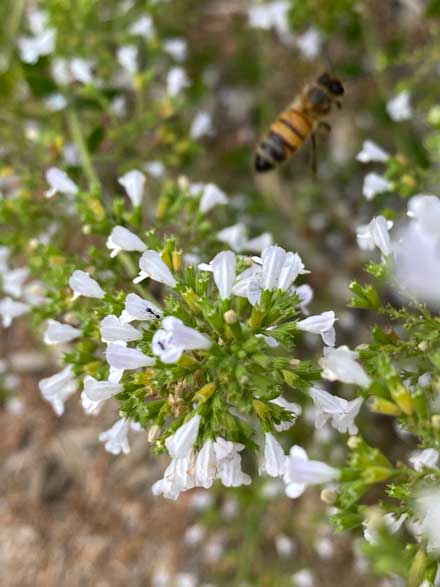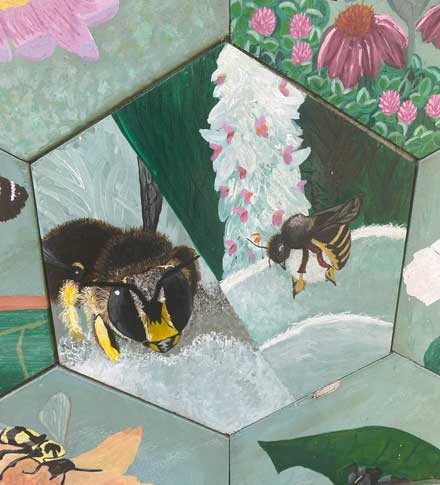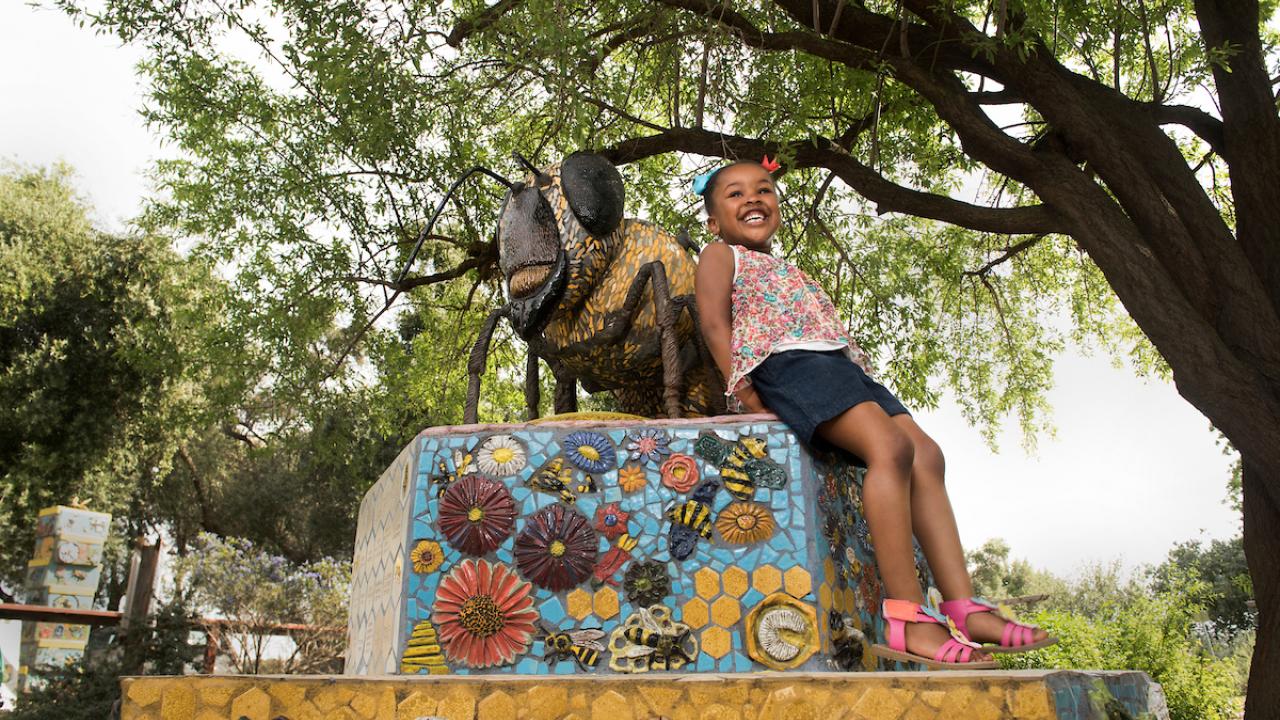Feeling busy as a bee during lockdown? Need a break from stressful shopping trips and wearisome working or studying at home? It’s time to visit the The Häagen-Dazs Honey Bee Haven. Studies have shown that spending time in nature and admiring art both contribute positively to our emotional wellbeing. The Häagen-Dazs Honey Bee Haven is an excellent way to take in the healing benefits of nature and art at the same time.
The Häagen-Dazs Honey Bee Haven “... is a unique outdoor museum where visitors can observe and learn about bees and the plants that support them.” The Haven, sponsored by Häagen-Dazs, was planted in fall 2009. The garden is open year-round during daylight hours and admission is free. Located next to the Harry H. Laidlaw Jr. Honey Bee Research Facility on Bee Biology Road, UC Davis, the Haven is conveniently close to downtown Davis, but just enough removed to feel like a true haven.
About Haven COVID-19 Restrictions
The Honey Bee Haven remains partially open during the pandemic. The Haven will be closed on Tuesdays from 7 a.m. to 10 a.m. and Thursdays from 8 a.m. to noon for safe conduct of maintenance and research. Please note that visitors must wear masks and practice social distancing.
Additionally, benches at the Haven are unusable at this time as they cannot be sanitized. For more information, click here.
Look for the pillars
You’ll know you’ve arrived at the Haven when you see two large pillars framing a green gate. These pillars are the first works of art you’ll find in the garden! Each pillar is covered in 3D mosaic tiles in rich honey yellows and oranges alongside floral pinks and greens. Look closely at these colorful pillars and you’ll see mosaic bees pollinating mosaic flowers and working away in a mosaic hive. Each pillar is topped with a larger-than-life bee sculpture, wings poised as if ready to fly. This relationship among bees, plants and our food is at the heart of all artwork in the garden.
A sculpture is the centerpiece
Immediately upon entering the Haven, a bee the size of a Labrador Retriever greets you. But there’s no need to fear a supersized sting — this giant bee is a work of art made out of colorful mosaic tiles. This sculpture, Miss Bee Haven, was created in 2009 by the Art/Science Fusion project at UC Davis. The bee is perched upon a mosaic flower that tops a hexagonal bench, whose seat is patterned to look like honeycomb. All six sides of the bench are covered in cheerful mosaics of bees working in hives and pollinating plants. Keep your eyes peeled for this hexagonal shape in other artworks, it appears throughout the garden.
Continue on the path, taking care to avoid stepping on the trees, bushes and flowers on all sides of the pathway. Plant stakes identify each variety of flora, from California Sunflower to Western Redbud. The California Catmint, or “Walker’s Low,” was absolutely brimming with honey bees on our last visit. Stop to see the stars of the show in action. Once the bees have collected their pollen, watch as they return to their hive in the back corner of the garden. Even the hive itself is a piece of art: it’s decorated with painted flowers and lettering that informs us that its residents are honeybees.

Look and learn
The entire garden is a homage to the relationship between bees, plants, and the food we eat. A vegetable garden holds the literal fruits of the bees’ labor, from tomatoes to gourds. Butterflies, other pollinators, flit around the plants. Just past the vegetable garden, the mosaic art continues in three large round planters. The planters are covered in mosaics. One of the planters displays the life cycle of the honeybee, from egg to larva to full-grown bee.
Entomological mural
Prefer paintings to mosaics? Make your way to the central shed. The east wall boasts a painted mural with detailed depictions of bees, right down to their furry little legs, perfectly designed for collecting pollen. The mural itself is composed of 22 hexagonal panels, a not-so-subtle nod to the shape of honeycomb.

Time for bees
An interactive sundial sits just to the left of the garden entrance. Visitors can stand in the middle of the clock, position themselves in the proper month, and their shadow will indicate the correct time. But what does a sundial have to do with bees? A nearby placard explains: honey bees use the angle of the sun relative to the hive to locate food sources and navigate back to the hive.
Bee informed
The Haven is more than just a beautiful place to appreciate art and nature. It is also an educational garden. Informational placards are positioned around the garden. Topics include how you can help the bees, how to build a bee house, and how to identify different bee species. Other placards explain the science of pollination and detail varieties of pollinator-friendly flowers. Many of these placards also contain QR codes that visitors can scan with their phone cameras for more information. Did you know that some flowers are more difficult for bees to collect pollen from? Or that there are several varieties of bee, including sweat bees, honeybees, and bumble bees?
All things bees are in this haven. Check it out.
Learn more about the Häagen-Dazs Honey Bee Haven here.
